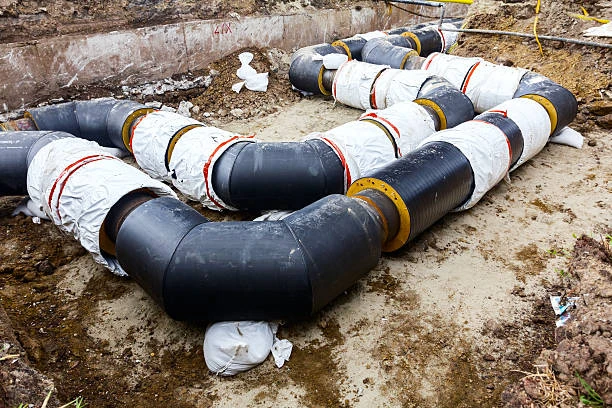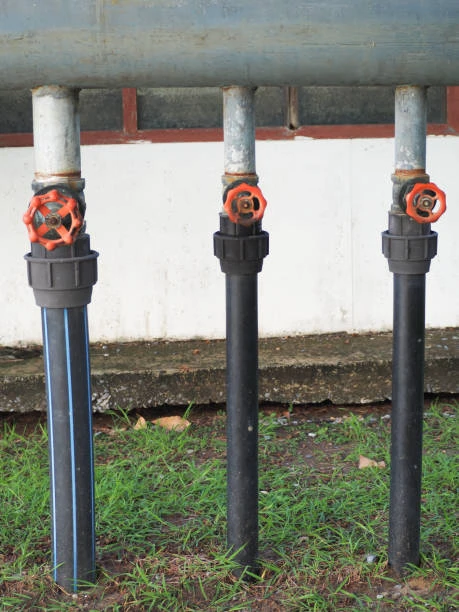Introduction
In the ever-evolving landscape of pipeline infrastructure, operators are increasingly turning to high-temperature polyethylene PE pipe to meet the demands of challenging applications. As industries push for efficiency, durability, and reliability, the use of high-temperature PE pipes is becoming a preferred choice, especially in sectors like oil and gas, water treatment, and chemical processing. This article will explore the rise of high-temperature PE pipe, their advantages, and the critical role of pipe press fittings in these demanding environments.

Understanding High-Temperature PE Pipe
What are High-Temperature PE Pipes?
High-temperature PE pipes are engineered to withstand elevated temperatures while maintaining structural integrity and performance. These pipes are often used in applications where traditional materials may fail due to thermal stress or chemical exposure. The development of high-temperature PE pipes allows for greater versatility in pipeline design and application.
Key Properties of High-Temperature PE Pipe
- Thermal Resistance: High-temperature PE pipes can withstand temperatures exceeding 60°C (140°F), making them suitable for hot water and chemical applications.
- Corrosion Resistance: These pipes exhibit excellent resistance to a wide range of chemicals, which is vital in industries like petrochemicals and wastewater treatment.
- Lightweight and Flexible: High-temperature PE pipes are lighter than metal counterparts, allowing for easier handling and installation.
- Longevity: With proper installation and maintenance, high-temperature PE pipes can have a service life of over 50 years.
The Growing Demand for High-Temperature PE Pipe
Industry Applications
The demand for high-temperature PE pipes is rising across various industries, including:
- Oil and Gas: Used for transporting crude oil, natural gas, and refined products, high-temperature PE pipes provide reliability in extreme conditions.
- Water Treatment: In wastewater treatment facilities, these pipes are used for transporting heated water and chemicals without risk of degradation.
- Chemical Processing: High-temperature PE pipes are ideal for transporting corrosive and hot chemicals, ensuring safety and efficiency.
Factors Driving Adoption
Several factors contribute to the growing adoption of high-temperature PE pipes, including:
- Increased Efficiency: Operators are seeking materials that improve operational efficiency and reduce downtime.
- Cost-Effectiveness: The lower installation and maintenance costs associated with PE pipes make them a financially attractive option.
- Sustainability Goals: The shift towards sustainable materials is prompting industries to adopt eco-friendly solutions, including high-temperature PE pipes.
The Role of PE pipe Press Fittings in High-Temperature Applications
Importance of Quality Fittings
In high-temperature applications, the quality of pipe press fittings is crucial. These fittings connect pipes securely, ensuring leak-proof joints that can withstand the stresses of temperature changes and chemical exposure. High-quality press fittings enhance the overall reliability of the pipeline system.
Advantages of Using PE pipe Press Fittings
- Speed of Installation: Pipe press fittings allow for rapid installation without the need for welding, minimizing project timelines.
- Reduced Risk of Leaks: The design of press fittings ensures a tight seal, significantly reducing the risk of leaks, which is critical in high-temperature applications.
- Adaptability: Modern pipe press fittings can accommodate a variety of pipe sizes and materials, making them suitable for diverse applications in pipeline systems.
Innovations in High-Temperature PE Pipe and Fittings
Technological Advances
Recent advancements in polymer technology have led to the development of high-performance high-temperature PE pipes. Innovations include enhanced material formulations that provide better thermal stability and chemical resistance. These advancements are essential for meeting the demands of modern infrastructure.
Smart Fittings and Monitoring Systems
The integration of smart technology into pipe press fittings is revolutionizing pipeline management. Smart fittings equipped with sensors can monitor pressure and temperature in real-time, providing valuable data for maintenance and operational efficiency. This technology is particularly beneficial in high-temperature applications, where monitoring conditions can prevent potential failures.
Challenges Facing the High-Temperature PE Pipe Market
Competition from Alternative Materials
While high-temperature PE pipes offer numerous advantages, they face competition from materials like metal pipes and other engineered plastics. Each material has unique benefits and limitations, making it essential for manufacturers to highlight the specific advantages of high-temperature PE in targeted applications.
Regulatory Compliance
Pipeline operators must navigate various regulatory frameworks that dictate material specifications and performance standards. Ensuring compliance with these regulations can be challenging, especially when introducing new materials like high-temperature PE pipes.
The Future of High-Temperature PE Pipes
Continued Growth and Innovation
The future of high-temperature PE pipes looks promising. As industries continue to prioritize efficiency, safety, and sustainability, the demand for these advanced piping solutions will likely grow. Manufacturers will need to focus on research and development to create even more resilient and adaptable materials.
Emphasis on Sustainability
As environmental concerns rise, the emphasis on sustainable materials and practices will shape the future of the pipeline industry. High-temperature PE pipes align with these sustainability goals, offering a recyclable and eco-friendly alternative to traditional materials.
Conclusion
The shift towards high-temperature PE pipes represents a significant advancement in the pipeline industry. As operators seek reliable and efficient solutions for demanding applications, the role of high-quality pipe press fittings becomes increasingly important. With continued innovations and a focus on sustainability, the future of high-temperature PE pipes is bright, paving the way for enhanced infrastructure in various sectors.
FAQ
1. What are the benefits of high-temperature PE pipes?
High-temperature PE pipes offer thermal resistance, corrosion resistance, lightweight construction, and long service life, making them ideal for demanding applications.
2. How do pipe press fittings work with high-temperature PE pipes?
Pipe press fittings create secure, leak-proof connections between high-temperature PE pipes, ensuring reliable fluid transport and system integrity.
3. In which industries are high-temperature PE pipes commonly used?
High-temperature PE pipes are widely used in the oil and gas, water treatment, and chemical processing industries.
4. What challenges does the high-temperature PE pipe market face?
Challenges include competition from alternative materials and the need to comply with various regulatory standards.
5. What innovations are shaping the future of high-temperature PE pipes?
Advancements in polymer technology and the integration of smart fittings and monitoring systems are driving the future of high-temperature PE pipes.


















